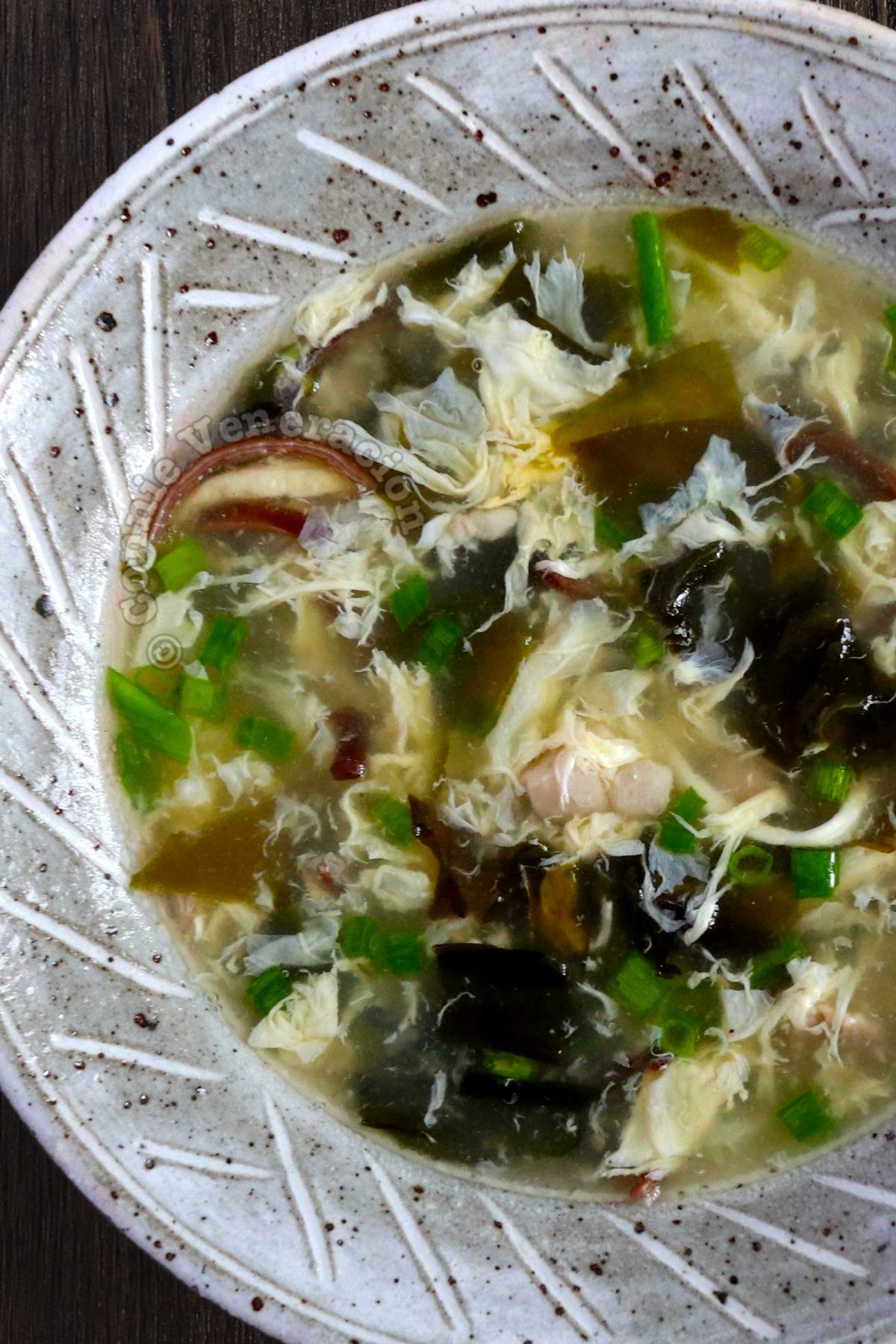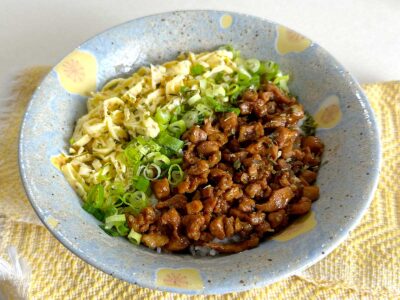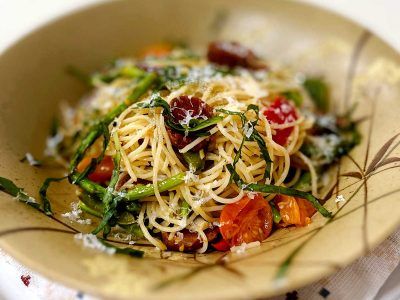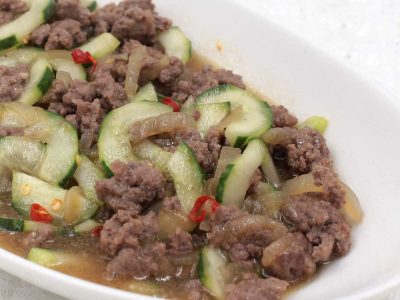The two ingredients that bring this soup to life are black fungus and wakame. Although they can both be bought fresh, we use dried most of the time because they are easier to store. We buy both in bulk to save us the trouble of driving to the grocery every time we need them.
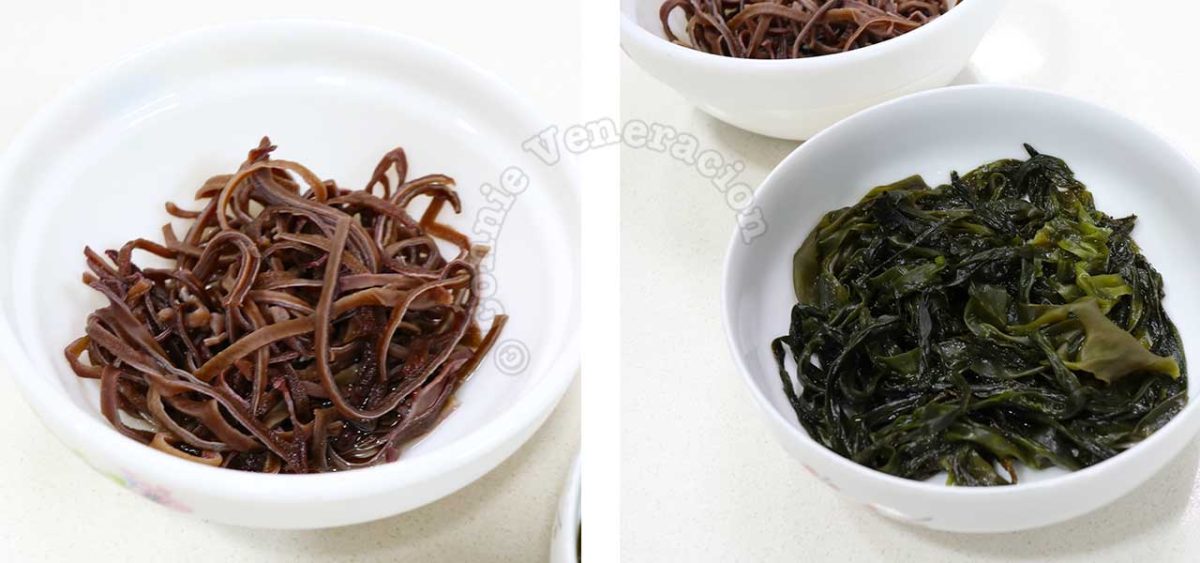
Dried black fungus can be bought whole, trimmed or untrimmed, or sliced. Whether whole or sliced, they need to be soaked in hot water until softened.
Wakame is a seaweed and you’ll find it in dried form Japanese groceries. It comes in long strands which you need to cut with kitchen shears to separate the amount that you need to make the soup. Like dried black fungus, wakame needs to be rehydrated. Once softened, it can be cut into small pieces.
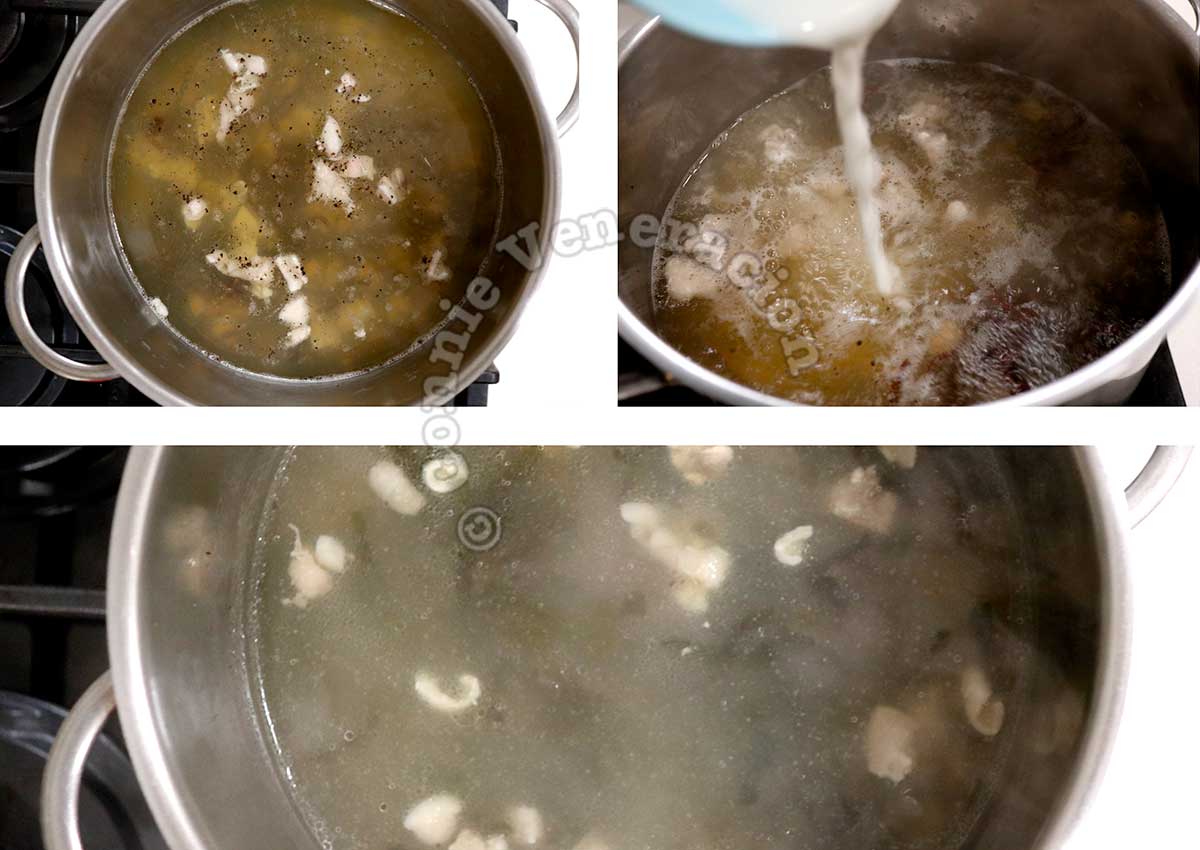
The trick to ensure that the egg does not sink to the bottom of the pot (and bowls) is to slightly thicken the broth with starch. Disperse starch in water (the combined soaking water of the black fungus and wakame is used here), pour into the hot broth and cook until the liquid is no longer cloudy. At this stage, you can drizzle in the beaten eggs.
Wispy or chunky eggs in your soup?
Here are a few tricks to master the art of making egg drop soup — with wispy egg strands or with chunkier ones.
- The eggs have to be beaten well so that the mixture has a uniform consistency.
- The broth has to be very hot. I prefer to pour the eggs right after turning off the heat, not while the broth is still simmering because I want the eggs to barely set — the strands are lighter and softer that way.
- The beaten eggs have to be poured in a very thin stream.
Now, what’s the difference in procedure if one wants wispy egg strands rather than chunky ones?
For wispy eggs
Swirl the broth. While the liquid is in motion, pour in the beaten eggs in a thin stream. As soon as the eggs are in the broth, stir lightly with a fork.
And if one prefers chunkier egg strands?
No swirling. Pour in the beaten eggs in a thin stream. When all of the egg mixture is in the broth, count five to ten seconds, depending on how thick you want the egg stands, before stirring the broth lightly with a fork.
Chicken wakame egg drop soup
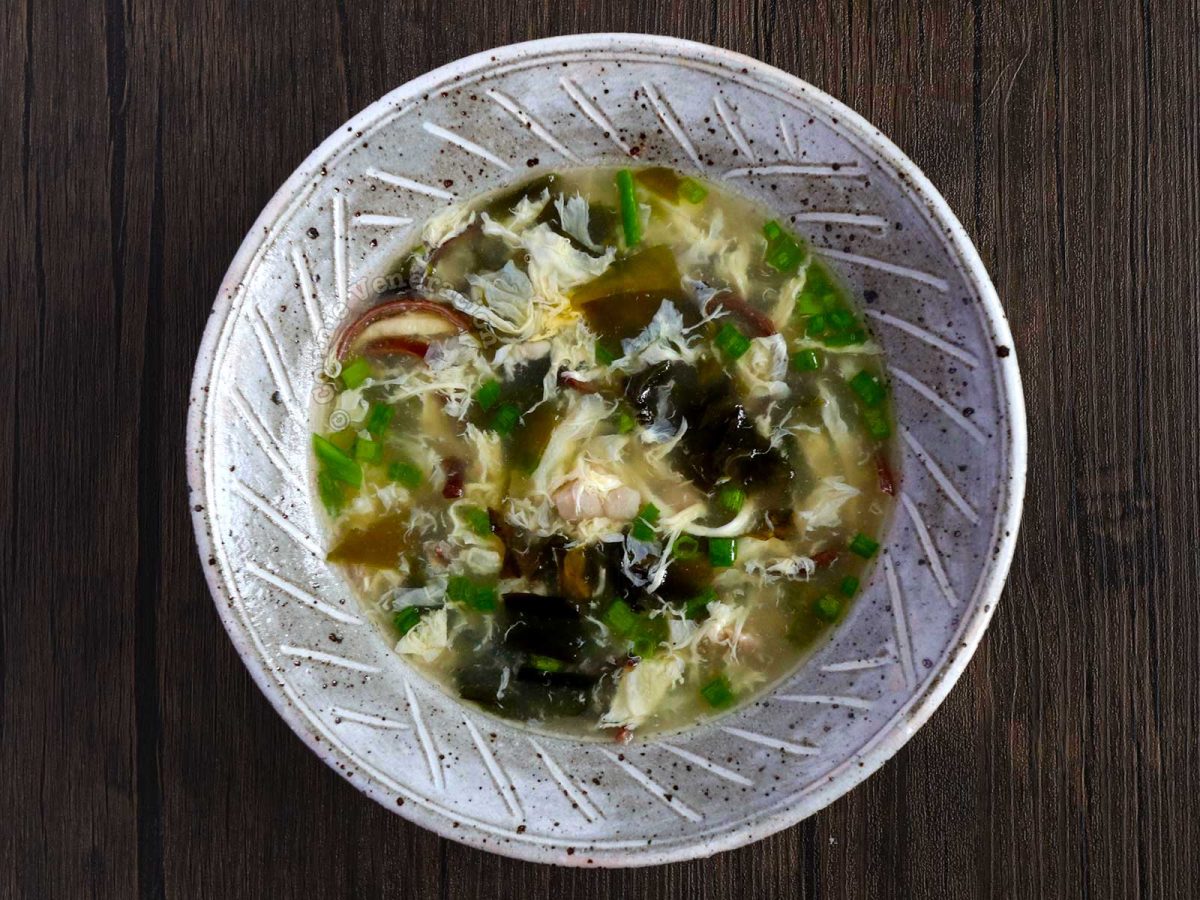
Ingredients
- 10 grams dried shredded black fungus
- 10 grams dried wakame
- 4 chicken thigh fillets minced
- 6 to 8 cups chicken bone broth
- salt
- pepper
- 2 teaspoons potato starch or corn starch
- 2 large eggs beaten
- 2 tablespoons finely sliced scallions
Instructions
- Soak the black fungus and wakame in hot water for ten minutes or until fully hydrated.
- Squeeze the wakame (do not discard the soaking water) and thinly slice.
- Heat the broth in a pot and bring to the boil.
- Strain the black fungus (again, save the soaking water) and drop into the broth.
- Stir the minced chicken into the broth.
- Bring to the boil, lower the heat and simmer for five minutes.
- Taste the broth. Add salt and pepper, as needed.
- Disperse the starch in the soaking water of the black fungus and wakame, and stir into the pot.
- Cook, stirring occasionally, until the broth is clear and slightly thickened.
- Stir in the wakame.
- Turn off the heat, pour in the eggs and stir.
- Taste the broth one last time, and adjust the seasonings, if needed.
- Sprinkle in sliced scallions before serving your chicken wakame egg drop soup.

